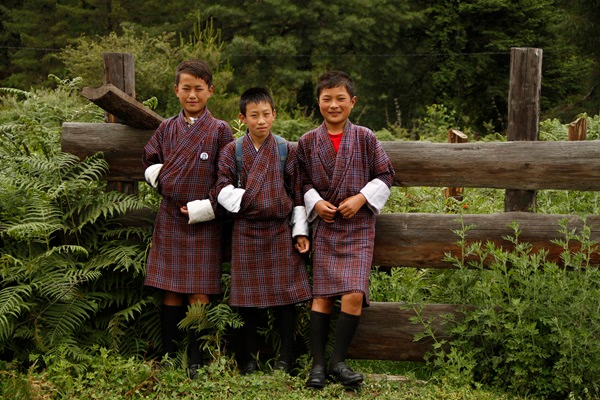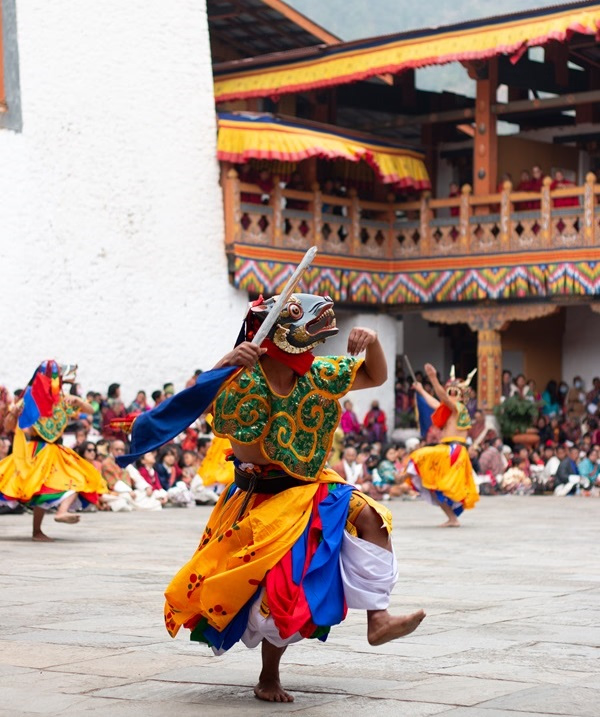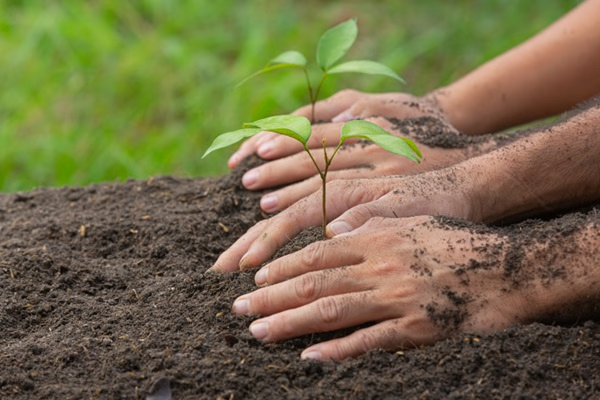
Bhutan, the “Land of the Thunder Dragon,” is a country in the Eastern Himalayas that offers a unique and captivating way of life. With its rich traditions and deep-rooted customs, Bhutanese culture stands out as something special.
Bhutan's textile tradition, celebrated globally for its unique craft and artistic skill, is a significant part of this culture, with Bhutanese women playing a crucial role in weaving and perfecting these textiles for centuries.
In this blog, we’ll explore the essential aspects of Bhutan culture, including daily life, festivals, and spiritual practices that make Bhutan so fascinating.
1. Traditional Clothing
In Bhutan, traditional clothing is a big part of daily life. Men wear the “gho,” a knee-length robe wrapped around the body and tied at the waist with a belt called a “kera.” This attire often includes a white scarf known as a “kabney,” which indicates the wearer’s rank or status.
Women wear the “kira,” a long dress that reaches the ankles and is paired with a blouse called a “wonju” and a short jacket known as a “toego.” These clothes are often made from bright, hand-woven fabrics with intricate designs.
Traditional attire is a source of national pride and is required in schools, government offices, and special occasions. The vibrant colors and patterns reflect the country’s artistic heritage and promote a sense of unity and identity among Bhutanese people.
Bhutanese citizens must wear these traditional outfits when visiting government offices, attending formal events, participating in religious ceremonies, and during certain festivals to preserve Bhutan's heritage and showcase cultural pride.
2. Festivals And Celebrations

Bhutan is famous for its colorful festivals, called “Tsechus.” These annual events are held in monasteries and fortresses (dzongs) nationwide.
Tsechus are a big part of Bhutanese culture and feature masked dances, music, and rituals that celebrate important events in the life of Guru Rinpoche, the founder of Tibetan Buddhism. The Paro and Thimphu Tsechus are especially popular with both locals and tourists.
During these festivals, participants wear elaborate costumes and masks and perform dances that depict stories of good triumphing over evil.
These celebrations are not only religious but also social events that bring communities together. They allow people to dress in their finest traditional clothing, enjoy local food, and engage in communal prayers and offerings.
3. Spiritual Practices And Monasteries
Spirituality is central to Bhutan’s culture. Monasteries and temples are community hubs for religious activity. The Taktsang Monastery, or “Tiger’s Nest,” is one of the most famous pilgrimage sites.
Monks and nuns are essential in keeping Buddhist teachings and practices alive. Their daily routines include prayer, meditation, and rituals to promote peace and harmony. The use of prayer flags is intricately tied to religious beliefs and is a notable aspect of Bhutanese culture and traditions.
These spiritual practices are integrated into daily life, with many Bhutanese people participating in morning and evening prayers, lighting butter lamps, and making pilgrimages to sacred sites.
The presence of monasteries and the monastic community also ensures the preservation of ancient texts, arts, and crafts integral to Bhutanese culture.
4. Social Customs And Etiquette
Bhutanese people are known for their warmth and hospitality. Visitors will notice the unique customs and social etiquette that reflect a strong sense of community and respect.
In Bhutan, greetings are important. The traditional greeting is “Kuzuzangpo La,” often said with a slight bow and a smile. Respect for elders and authority figures is deeply ingrained, and it is expected to use honorific titles and deference in their presence.
When visiting someone’s home, removing your shoes before entering is customary, and offering a small gift as a token of appreciation is polite. Sharing meals is an essential social activity, and guests are often invited to join family meals, which are seen as opportunities to bond and share blessings.
5. Archery: The National Sport

Archery is the national sport and a beloved part of Bhutanese culture. Archery competitions are lively events with singing, dancing, and playful banter among participants.
It’s not just about the competition. It’s also a social event that strengthens community bonds. Competitions often involve two teams aiming to hit targets placed 140 meters apart, a much greater distance than Olympic archery.
The atmosphere is festive, with spectators cheering, singing traditional songs, and performing dances to encourage the archers. These events reflect the communal spirit and the importance of tradition in Bhutanese society.
6. Bhutanese Cuisine
Bhutanese cuisine reflects its culture and geography. Meals usually center around rice, with various spicy dishes made from vegetables, meat, and cheese. The most famous dish is “Ema Datshi,” a spicy stew made from chili peppers and cheese.
Bhutanese food often features local, organic ingredients and focuses on sustainability. Other popular dishes include “Phaksha Paa” (pork with red chilies) and “Jasha Maroo” (spicy chicken).
Butter tea, known as “Suja,” and “Ara,” a traditional alcoholic beverage, are also commonly consumed. Meals are usually communal, with families and friends gathering to share food and stories, reinforcing social bonds and cultural continuity.
7. Preserving Culture In A Modern World
Bhutanese culture remains strong, even as the country modernizes. Bhutan’s commitment to “Gross National Happiness” shows a balance between cultural preservation and development, prioritizing well-being and happiness over economic growth alone.
This unique development philosophy emphasizes sustainable development, environmental conservation, and cultural preservation.
Policies are designed to ensure that modernization does not come at the expense of cultural identity. The approach has helped Bhutan maintain its traditional way of life while embracing necessary technological and infrastructural advancements.
8. Education And Language
Education in Bhutan aims to foster a sense of cultural identity. Dzongkha, the national language, is taught alongside English, which is used for many subjects. The small country’s bilingual approach helps Bhutanese youth stay connected to their culture while preparing them for the modern world.
Schools incorporate lessons on traditional arts, crafts, and cultural practices, ensuring students appreciate and continue their heritage. The education system also emphasizes respect, community service, and environmental stewardship, which are integral to Bhutanese culture.
9. Sustainable Development

Bhutan is known globally for its dedication to environmental conservation and sustainable development. The country’s policies protect its natural landscapes and promote eco-friendly practices, reflecting Bhutan culture’s high value on nature and environmental stewardship.
Examples of Bhutan’s commitment to sustainability include preserving forest cover, promoting organic farming, and investing in renewable energy sources.
Their sustainability practice safeguards the environment and supports the country’s cultural and spiritual beliefs that view nature as a source of life and well-being.
Conclusion About Bhutanese Culture
Bhutanese culture uniquely blends tradition and modernity, spirituality, and everyday life. Its customs, traditions, and values offer valuable lessons in living a balanced and meaningful life. As Bhutan continues to face modern challenges, it remains a model of cultural preservation and the enduring power of tradition.
Whether you're planning to visit Bhutan or want to learn more about its way of life, Bhutan culture offers a rich and rewarding journey into the heart of the Himalayas.
Ready to experience the magic of Bhutanese culture firsthand? Engage with the leading Bhutan tour agency, DrukAsia, to plan your unforgettable journey. Explore Bhutan with expert guides and dive into this incredible country's unique traditions and breathtaking landscapes.
Contact us today!
Frequently Asked Questions About Bhutanese Culture
What Is The Role Of Traditional Medicine And Religious Practices In Bhutanese Culture?
Traditional Bhutanese medicine, known as Sowa Rigpa, plays a vital role in the country's healthcare system. It incorporates herbal remedies, dietary practices, and spiritual healing techniques.
The Institute of Traditional Medicine in Thimphu trains practitioners and researchers of local medicinal plants, ensuring this ancient practice thrives alongside modern medicine.
What Role Does Music, Dance, And National Sport Play In Bhutanese Culture?
Music and dance are integral parts of Bhutanese culture. Traditional music, often accompanied by instruments like the drangyen (a flute), is performed during festivals, religious ceremonies, and social gatherings.
Additionally, traditional instruments such as 'Chiwang' (two-stringed fiddle), 'Dramnyen' (a large rebec), 'Lingm' (six-holed flute), and 'Aungli' (horn) are incorporated in music and dance.
Dance forms, such as the masked dances performed during Tsechus, are artistic expressions and communicate religious stories and cultural values. Traditional folk variations are performed during special celebrations such as religious festivals, archery matches, royal coronations, and birth anniversaries.
How Does Bhutanese Architecture And Bhutan's Textile Tradition Reflect Its Culture?
Bhutanese architecture is distinctive and reflects the country's cultural heritage. Traditional buildings, including houses, temples, and fortresses (dzongs), are constructed using local materials like wood, stone, and clay.
Dzongs, in particular, serve as administrative centers and monastic institutions, embodying Bhutan's unique blend of secular and religious life. They often feature intricate woodwork, colorful paintings, and a stBhutan's harmonizes with the natural landscape.
What Are Some Unique Bhutanese Customs Related To Hospitality?
Bhutanese hospitality is warm and generous. Guests are often greeted with traditional butter tea (suja) and snacks such as roasted rice or maize.
It is customary to offer food and drink to visitors, and refusing hospitality can be considered impolite. In rural areas, visitors might also experience unique customs, such as being invited to family rituals or local festivals.
